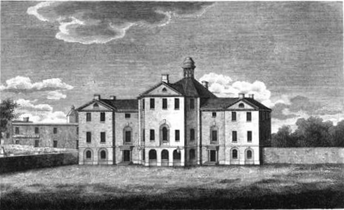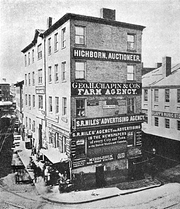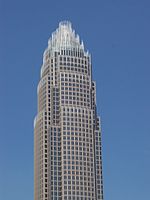
George Ticknor was an American academician and Hispanist, specializing in the subject areas of languages and literature. He is known for his scholarly work on the history and criticism of Spanish literature.
The Philadelphia Savings Fund Society (PSFS), originally called the Philadelphia Saving Fund Society, was a savings bank headquartered in Philadelphia, Pennsylvania, United States. PSFS was founded in December 1816, the first savings bank to organize and do business in the United States. The bank would develop as one of the largest savings banks in the United States and became a Philadelphia institution. Generations of Philadelphians first opened accounts as children and became lifelong depositors.
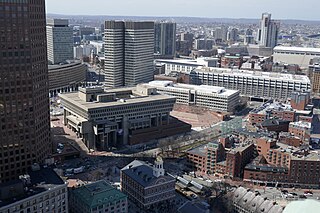
Government Center is an area in downtown Boston, centered on City Hall Plaza. Formerly the site of Scollay Square, it is now the location of Boston City Hall, courthouses, state and federal office buildings, and a major MBTA subway station, also called Government Center. Its development was controversial, as the project displaced thousands of residents and razed several hundred homes and businesses.

Scollay Square was a vibrant city square in downtown Boston, Massachusetts. It was named for William Scollay, a prominent local developer and militia officer who bought a landmark four-story merchant building at the intersection of the Cambridge and Court Streets in the year 1795. Local citizens began to refer to this intersection as Scollay's Square, and, in 1838, the city officially memorialized the intersection as the Scollay Square. Early on, the area was a busy center of commerce, including daguerreotypist (photographer) Josiah Johnson Hawes (1808–1901) and Dr. William Thomas Green Morton, the first dentist to use ether as an anaesthetic.

A mutual savings bank is a financial institution chartered by a central or regional government, without capital stock, owned by its members who subscribe to a common fund. From this fund, claims, loans, etc., are paid. Profits after deductions are shared among the members. The institution is intended to provide a safe place for individual members to save and to invest those savings in mortgages, loans, stocks, bonds and other securities and to share in any profits or losses that result.

Colonel Thomas Handasyd Perkins, also known as T. H. Perkins, was an American merchant, slave trader, smuggler and philanthropist from a wealthy Boston Brahmin family. Starting with bequests from his grandfather and father-in-law, he amassed a huge fortune. As a young man, he traded slaves in Saint-Domingue, worked as a maritime fur trader trading furs from the American Northwest to China, and then turned to smuggling Turkish opium into China. His philanthropic contributions include the Perkins School for the Blind, renamed in his honor; the Boston Museum of Fine Arts; McLean Hospital; along with having a hand in founding the Massachusetts General Hospital.
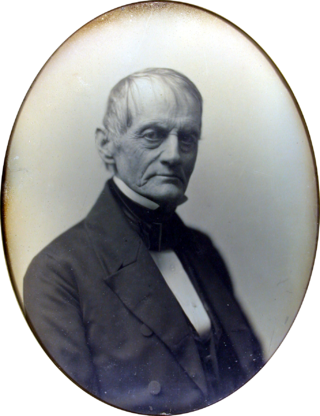
William Appleton was an American businessman and politician from Massachusetts. He was a trader, shipowner, and banker, and served as a U.S. representative from Massachusetts from 1851 to 1855, and again from 1861 to 1862.

Tremont Street is a major thoroughfare in Boston, Massachusetts.

The Boston Library Society was an American subscription library established in New England's pre-eminent city, Boston, during 1792. Early subscribers included Revolutionary War figures Paul Revere and William Tudor. The society existed until 1939 when it merged into a larger historical library known as the Boston Athenæum.It has been maintained as an institution within the Athenaeum and conducts short Annual Meetings, within he Athenaeum's Annual meetings.It was founded fifteen years before the atheneum.
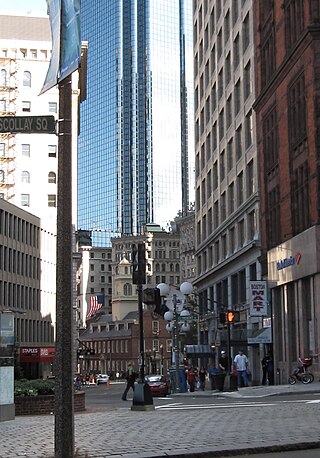
Court Street is located in the Financial District of Boston, Massachusetts. Prior to 1788, it was called Prison Lane (1634–1708) and then Queen Street (1708–1788). In the 19th century it extended beyond its current length, to Bowdoin Square. In the 1960s most of Court Street was demolished to make way for the construction of Government Center. The remaining street extends a few blocks, near the Old State House on State Street.

Gardiner Greene (1753–1832) was a cotton planter and merchant from Boston, Massachusetts who conducted business from his plantation, Greenfield, in Demerara (Guyana) in the late 18th and early 19th centuries. Socially prominent in the town of Boston, he owned a house, greenhouse, and garden filled with fruit trees and peacocks on Cotton Hill, opposite Scollay Square. He was also the son-in-law of painter John Singleton Copley.
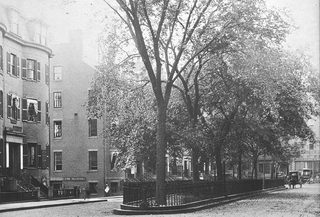
Pemberton Square in the Government Center area of Boston, Massachusetts, was developed by P.T. Jackson in the 1830s as an architecturally uniform mixed-use enclave surrounding a small park. In the mid-19th century both private residences and businesses dwelt there. The construction in 1885 of the massive John Adams Courthouse changed the scale and character of the square, as did the Center Plaza building in the 1960s.

Cornhill was a street in Boston, Massachusetts, in the 18th, 19th and 20th centuries, located on the site of the current City Hall Plaza in Government Center. It was named in 1829; previously it was known as Market Street (1807–1828). In its time, it comprised a busy part of the city near Brattle Street, Court Street and Scollay Square. In the 19th century, it was the home of many bookstores and publishing companies. As of 1969, Cornhill exists as 144 feet along the edge of City Hall Plaza.

Ephraim Peabody was an American Unitarian clergyman, preacher, and philanthropist who was one of the founders of the Provident Institution for Savings in Boston. Peabody also founded a school for adults whose education had been neglected and was otherwise largely interested in devising measures for the relief of the poor.

James Savage (1784–1873) was an American banker and author. He was one of the founding fathers of Provident Institution for Savings in the Town of Boston established in 1816 as the first chartered savings bank in the United States. James was also well known for his research as an antiquary and as author of A Genealogical Dictionary of the First Settlers of New England. He was instrumental in helping his son-in-law, William Barton Rogers, establish MIT and helping his cousin, Frederic Tudor, establish the ice trade in the West Indies, among many other ventures.
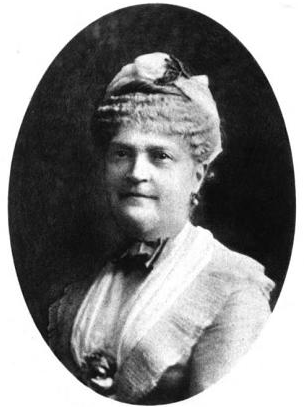
Anna Eliot Ticknor was an American educator, who launched the first correspondence school in the United States, and pioneered public libraries in Massachusetts.

Daniel Pinckney Parker was a prominent American merchant, shipbuilder, and businessman in 19th-century Boston, Massachusetts.
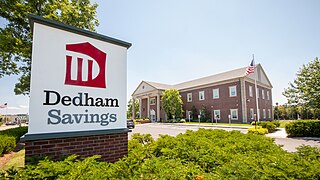
Dedham Savings is one of the oldest American banks still in operation and one of the oldest banks in the state of Massachusetts still doing business under its original charter.
St Martin’s Place Bank was founded in London in 1816 and for much of the nineteenth century was the leading savings bank in the country. However, it went into decline in the latter part of the century and, in 1896, declined to accept the recommendations of the independent Inspection Committee. The Bank closed its doors and transferred the depositors’ funds to the Post Office.
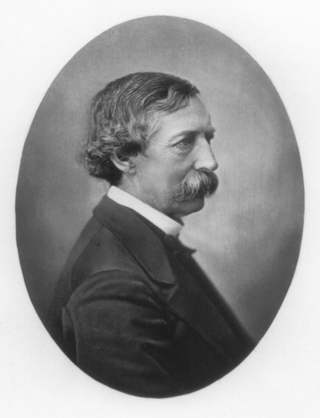
William Whitwell Greenough was an American merchant who served as president of the Boston Public Library from 1868 to 1888.

